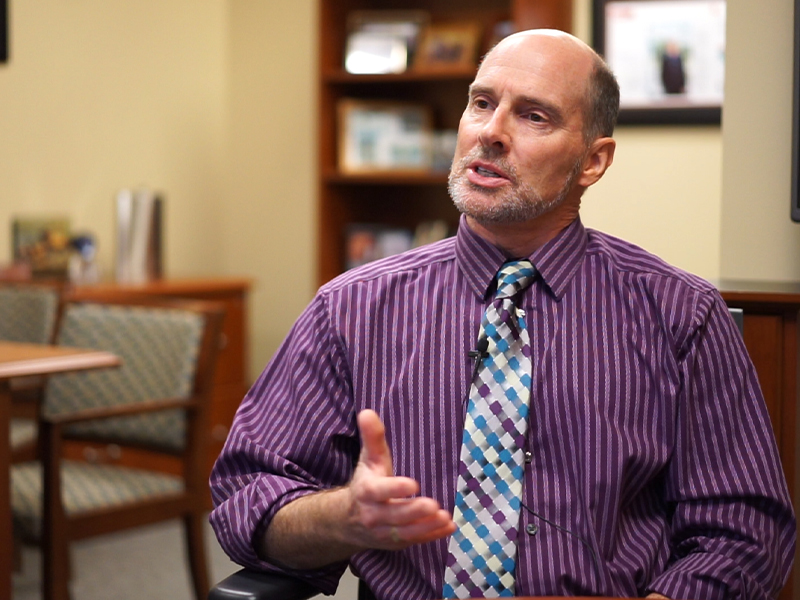Doug Nowak is Sanford Health’s vice president of data analytics. As such, he is part of an ongoing effort to help guide the delivery of health care in our communities.
The process of converting information to insight has been an increasingly valuable tool in medicine — and never more vital than right now.
Confronting the challenges of successfully stemming the effects of the coronavirus is accomplished best when the system has an accurate view of what it is up against.
Making evidence-based models that give Sanford Health a clearer view of the immediate future has been the top priority for the Enterprise Data Analytics Department since COVID-19 was in the beginning stages of becoming a global concern.
It is not an exact method. Notions that early national projections of the scope of the virus would be unchanging were quickly dispelled. In its place is a moving target that demands constant monitoring and varies from region to region. It comes with statistical analysis that continues to evolve based on new numbers and increasing knowledge of the virus.
Data analytics part of the process
Nowak’s team of developers, analysts, mathematicians and statistical experts is part of that process for Sanford Health. They take the “what” and turn it into “what next.”

“Early on with this disease, leadership came to me and said, ‘Here’s the data we need,’” Nowak said. “And then I sat down with my ‘geek squad’ and said, ‘OK, we need to get this, and we need to put it together quickly.’ That was the task, and that’s what they did.”
Social distancing and flattening the curve was put in place to eliminate worst-case scenarios. Nowak’s staff provided projections that allowed Sanford Health to move forward knowing what could come.
“It has a lot to do with answering, ‘How much do we need?’” Nowak said. “And we look at projections and can tell them, ‘Well, if you prepare for this, you’ll be fine.’”
As an example, at the beginning there was concern Sanford might need temporary staffing to keep up. Efforts were put in place to cross-train employees in anticipation of staffing demands that would exceed the supply of available workers for some departments.
Those making the staffing decisions needed analysis that addressed how many people would be seeking health care during that period. Obviously, they needed to know to what degree the presence of the virus would affect a normal week.
Modeling involves a lot of factors
“We’re not going to change our models every day because I’m not chasing a squirrel,” Nowak said. “If you have a small peak with positive COVID patients, it might mean that there was a lot of mass-testing. We’ve been on track to update the model about every two weeks. There have been enough changes that we could look it over and say it was time to adjust.”
The call for information around the country has models “coming out of the woodwork,” according to Nowak. Filtering through the ones that may be pertinent to the circumstances within Sanford communities is another role for the enterprise data analytics staff.
“You want to take the ones that are the most accurate,” he said. “But I guarantee none of them are 100% right. That’s including ours. We adjust because we don’t know enough about this disease yet.”
Before announcing a new model, Nowak’s staff will have conversations with Sanford providers, state epidemiologists and with those crafting models in neighboring states.
“This is not a time for developing something and deciding to protect it,” Nowak said. “If you can really help, then share that knowledge and form a consensus.”
It was of small consolation given the accompanying hardship, but as the virus worked its way into the area, Sanford modelers have been able to get more accurate. Instead of projecting scenarios, they were able to start predicting specific numbers.
Meanwhile, the health system has adjusted quickly to the idea that plans can change.
Keeping numbers down
Using data analytics to predict with 80% to 95% accuracy who is going to need medical attention as an inpatient for the virus during the next week, for instance, has given Sanford invaluable information in regard to anticipating staff, supplies and the amount of space needed.
Flattening the curve gave providers time to map out and prepare for worst-case contingencies that, thankfully, have not materialized.
“We started out by preparing scenarios for what I would call ‘the best of the worst,’” Nowak said. “We did not project for doomsday because we didn’t believe that was going to happen.”
Nowak sees the public in a partnership with the information dispensed. When numbers of the affected climb, social distancing will increase, and the number of hospitalizations will adjust accordingly.
“It’s a very serious disease,” Nowak said. “But I think we’ve planned for the worst, and we’re hoping for the best, and the numbers keep coming down. We’ve reached a stage where the health systems can manage the volume. The more we can manage the volume and take care of the patients, the more patients we’ll have walking out of here healthy.”
Learn more
…
Posted In Corporate Services & Administration, COVID-19, People & Culture, Sanford Stories
